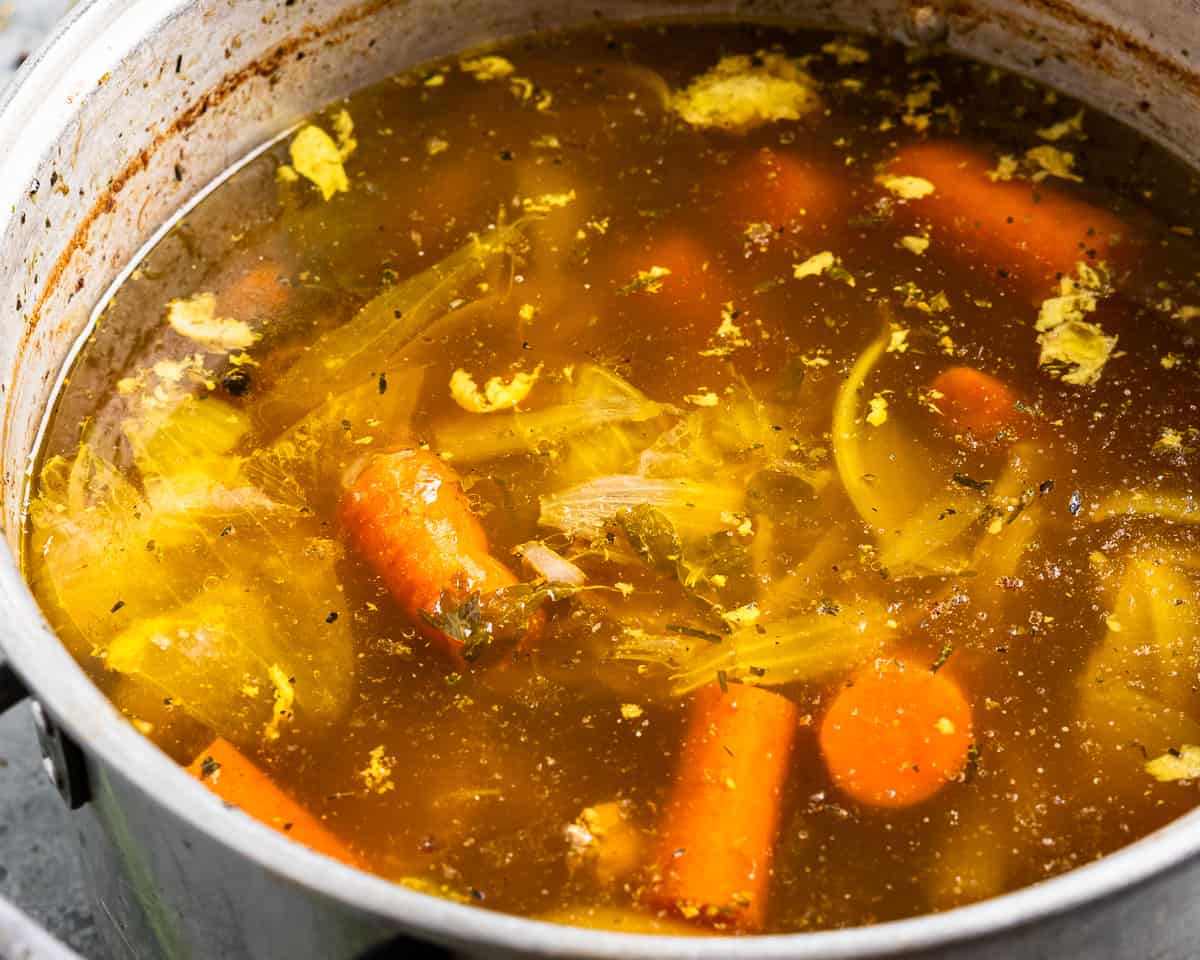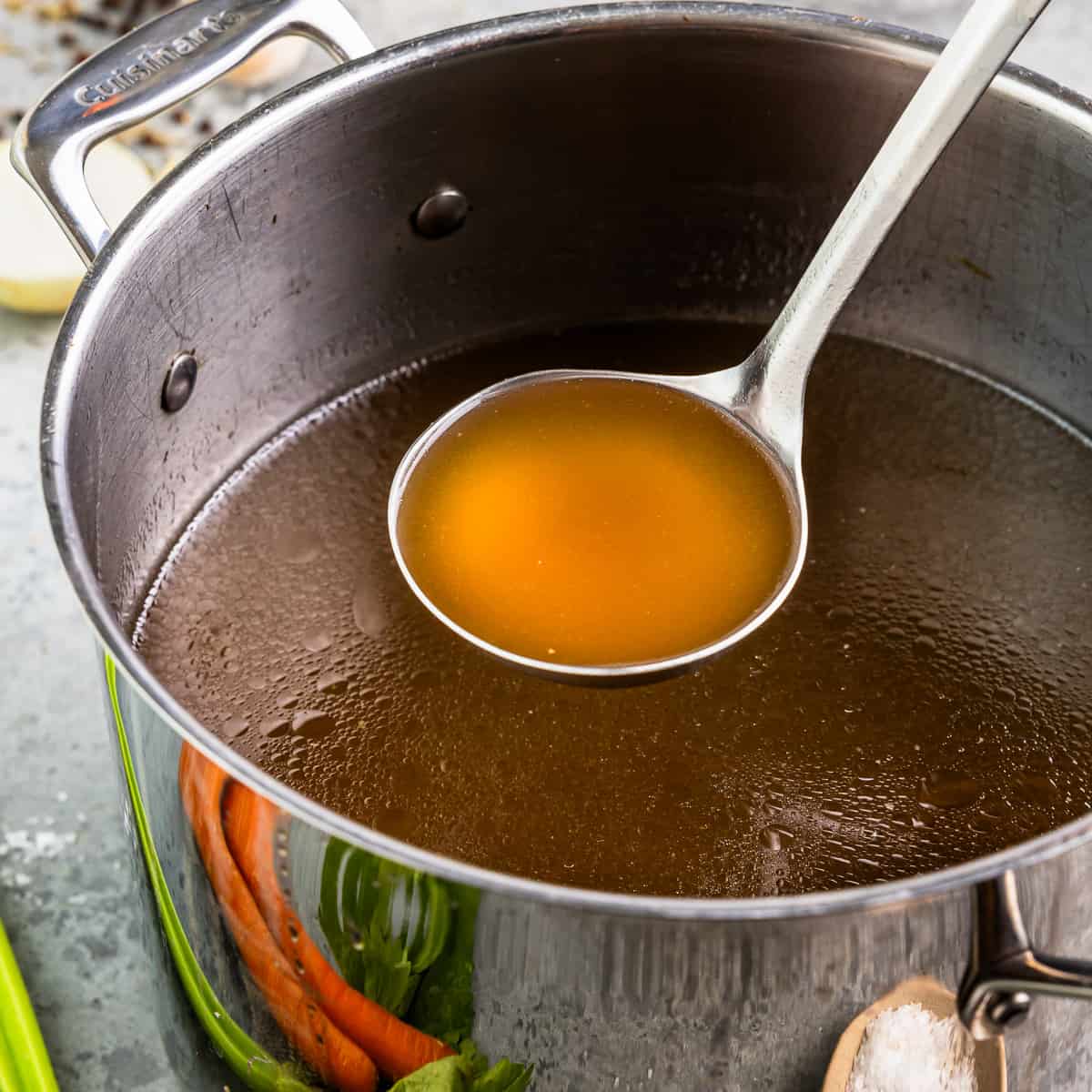The Ultimate Guide to Making and Enjoying Organic Bone Broths in your home
Bone brew has actually gotten focus for its many health benefits and cooking adaptability. Crafting natural bone broth at home enables people to manage the quality of ingredients, making sure a nutritious end result. Recognizing the selection of bones, necessary flavoring components, and appropriate cooking methods is essential. As the process unravels, one may wonder exactly how to boost their broth past the basics and integrate it right into daily dishes for improved flavor and nourishment.
Understanding the Health Benefits of Bone Brew
Although bone broth has actually been a staple in different foods for centuries, its health advantages have gotten considerable focus in recent years. Rich in collagen, amino acids, and minerals, bone broth is often touted for its possible to support joint wellness, improve intestine function, and enhance skin elasticity. The jelly originated from prepared bones might help digestion and aid secure the digestive tract lining, potentially relieving concerns like leaking gut syndrome.Furthermore, the visibility of nutrients such as glucosamine and chondroitin might add to reduced swelling and discomfort alleviation in joints. In addition, bone brew is moistening and can work as a nourishing base for stews and soups. Many supporters additionally declare that it improves the body immune system, many thanks to its mineral profile. Generally, the revival of interest in bone broth is connected to its viewed ability to promote total health and assistance various bodily functions.
Choosing the Right Bones for Maximum Flavor and Nutrition
What factors should one consider when choosing bones for brew preparation? The kind of bones made use of greatly impacts both flavor and dietary worth. It is crucial to select bones that include a mix of marrow bones, joint bones, and meaningful bones. Marrow bones provide abundant flavors and healthy and balanced fats, while joint bones add collagen, improving the broth's dietary profile.Additionally, sourcing bones from grass-fed or pasture-raised pets assurances better and even more nutrients, as these animals are commonly healthier. The quality of the bones is also essential; picking bones from regional butchers or farmers' markets can ensure excellent flavor. Bone size matters also; larger bones launch even more gelatin, resulting in a richer broth. Considering the kind of pet-- fish, poultry, or beef-- can influence the final preference, permitting for versatile brew alternatives customized to private choices.
Crucial Components for a Savory Bone Brew

Quality Bone Choice
The foundation of a flavorful bone broth depends on the cautious selection of high-quality bones. Sourcing organic, pasture-raised or grass-fed bones is crucial, as these alternatives are most likely to be without harmful additives and provide exceptional nutrients. Varieties such as beef, lamb, or chicken bones each give unique flavors and health advantages. Bone kinds, including marrow bones, knuckle bones, and oxtails, contribute jelly and collagen, boosting the broth's structure. Picking bones with a mix of meat and connective tissue can also add splendor and depth. Furthermore, choosing bones with visible marrow guarantees a nutrient-dense broth, elevating the overall high quality. Ultimately, investing time in top quality bone option prepares for a beneficial and delicious broth.
Aromatic Flavor Boosters
Picking top quality bones sets the phase for a abundant and nutritious bone broth, yet it is the enhancement of aromatic taste enhancers that truly elevates the recipe. Components such as onions, garlic, and carrots not only impart sweet taste yet also add depth to the broth. Fresh natural herbs like parsley, thyme, and bay leaves add a fragrant note, while spices such as black peppercorns and cloves present warmth and complexity. Additionally, incorporating a dash of apple cider vinegar can aid essence minerals from the bones, enriching the broth. These flavor boosters produce a harmonious mix, transforming an easy brew right into a mouthwatering foundation for sauces, soups, or stews, making it a versatile element in any kind of cooking repertoire.
Step-by-Step Overview to Making Bone Brew at Home
Producing bone broth in your home can be a rewarding culinary venture that enhances both flavor and nutrition in different dishes. To begin, one must select top quality bones, preferably from grass-fed or natural sources. Roasting the bones at 400 ° F for about 30 minutes can intensify the taste. Next, move the baked bones to a huge pot or slow-moving cooker and cover them with cool water. Adding a sprinkle of vinegar assists essence minerals from the bones.Include aromatic vegetables like onions, carrots, and celery for included deepness, along with herbs and spices as desired. Bring the blend to a boil, after that minimize to a simmer. It is necessary to allow the brew simmer for a minimum of 12 hours, though longer is preferable for maximum splendor. Strain the brew with a fine-mesh screen and store it in closed containers, all set to boost dishes with its nourishing significance.
Tips for Refining Your Bone Broth Simmer
While simmering bone broth, maintaining the best temperature and timing is necessary for accomplishing a abundant and delicious result. A mild simmer, ideally in between 190 ° F and 210 ° F, helps extract optimum nutrients and tastes without steaming, which can make the broth cloudy. It is a good idea to keep an eye on the pot carefully, changing the heat as required to keep this simmer.Timing is additionally crucial; a longer simmer, generally varying from 12 to two days, allows for much deeper taste removal and collagen launch. For chicken bones, a 12 to 24-hour simmer suffices, while beef bones take advantage of longer food preparation times.Additionally, skimming any type of foam or impurities that increase to the surface area during the very first couple of hours can enhance the brew's quality and taste. Lastly, making sure the pot is covered throughout simmering aids to keep moisture and increase the flavors, making for a much more satisfying end item.
Creative Ways to Utilize Bone Broth in Your Cooking
Incorporating bone broth into numerous meals boosts both taste and dietary worth. Chefs and home cooks alike find that utilizing bone brew as a base for soups and stews improves deepness and splendor, changing simple recipes into passionate dishes. It can also be utilized in risottos, where the broth changes water, enabling the grains to absorb its mouthwatering essence.Additionally, bone broth functions as a superb cooking fluid for grains like quinoa or rice, instilling them with nutrients and flavor. For an included spin, it can be made use of in braising meats, causing tender, tasty end results. Also sauces profit from a sprinkle of bone broth, enriching their taste profile.Moreover, bone broth can be integrated right into healthy smoothies for an unforeseen health and wellness boost, offering healthy protein and nutrients without endangering preference. These imaginative applications display the versatility of bone broth in everyday food preparation, making it an invaluable cooking area staple.
Storing and Preserving Your Home Made Bone Brew
Correct storage and conservation of homemade bone brew is important for preserving its flavor and nutritional benefits. Cold techniques and refrigeration finest Source methods play an essential role in extending the brew's service life. Comprehending these techniques can help assure that the broth continues to be scrumptious and risk-free for future usage.

Freezing Methods Discussed
Cold strategies are necessary for successfully keeping and preserving home made bone broth, ensuring its abundant tastes and nutrients remain undamaged for future use. To freeze bone broth, it is suggested to allow it great totally prior to moving it to storage containers. Glass jars, silicone mold and mildews, or heavy-duty freezer bags are suitable choices. When using containers, leave area on top for expansion throughout freezing. Portioning the brew into smaller quantities permits very easy thawing and minimizes waste. Label containers with the date and materials for very easy identification. For peak high quality, consume the frozen broth within three to six months - Beef Broth. Thawing can be done in the refrigerator or by making use of a microwave, ensuring that the broth is heated extensively before usage
Refrigeration Best Practices
While numerous focus on freezing as an approach of preservation, refrigeration additionally plays useful content an important duty in storing homemade bone broth properly. Once cooled, bone brew ought to be moved to airtight containers, guaranteeing marginal air direct exposure to stop wasting. It is suggested to cool brew within two hours of food preparation to keep its high quality. Typically, homemade bone broth can be saved in the refrigerator for as much as five days. Identifying containers with days can help track freshness. For peak flavor and security, broth must be reheated to a rolling boil prior to intake. If longer storage space is called for, cold remains an outstanding choice, yet appropriate refrigeration practices assure that bone broth continues to be delicious and nutritious for temporary use.
Frequently Asked Inquiries
Can I Make Use Of Frozen Bones for Making Bone Brew?
The concern of utilizing icy bones for bone broth develops often (Bone Broth Delivery). Specialists agree that icy bones can be utilized properly, however they should be defrosted before food preparation to assure ideal flavor and nutrient removal
For How Long Can I Store Homemade Bone Broth?

Is It Safe to Reheat Bone Brew Multiple Times?
Reheating bone brew multiple times can posture safety problems - Chicken Broth. Each reheating cycle boosts the threat of microbial growth. It is suggested to reheat only as soon as and keep any leftovers without delay to ensure safety and quality
Can I Add Veggies to the Broth for Flavor?
Including veggies to brew enhances flavor and dietary value. Usual selections include carrots, onions, and celery. The veggies infuse their significance right into the broth, producing a richer and much more tasty last item.
What's the most effective Means to Defrost Icy Bone Broth?
To defrost frozen bone brew, one can put it in the fridge over night, use a microwave on low warmth, or submerge the secured container in warm water, ensuring also thawing without endangering taste or nutrients. It is important to select bones that consist of a mix of marrow bones, joint bones, and meaningful bones. Marrow bones provide abundant flavors and healthy fats, while joint bones contribute collagen, improving the brew's dietary profile.Additionally, sourcing bones from grass-fed or pasture-raised pets guarantees higher high quality and more nutrients, as these animals are usually healthier. Bone kinds, consisting of marrow bones, knuckle bones, and oxtails, add gelatin and collagen, improving the brew's structure. Picking high-grade bones sets the stage for Chicken Broth a rich and nourishing bone broth, however it is the enhancement of aromatic taste boosters that absolutely boosts the recipe. Also sauces benefit from a dash of bone broth, enriching their taste profile.Moreover, bone broth can be integrated right into shakes for an unanticipated health increase, offering protein and nutrients without compromising taste.